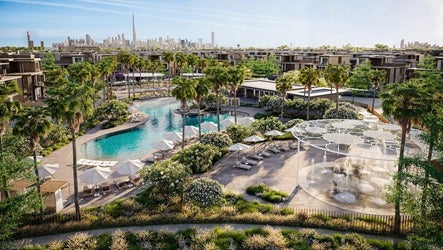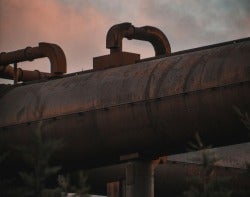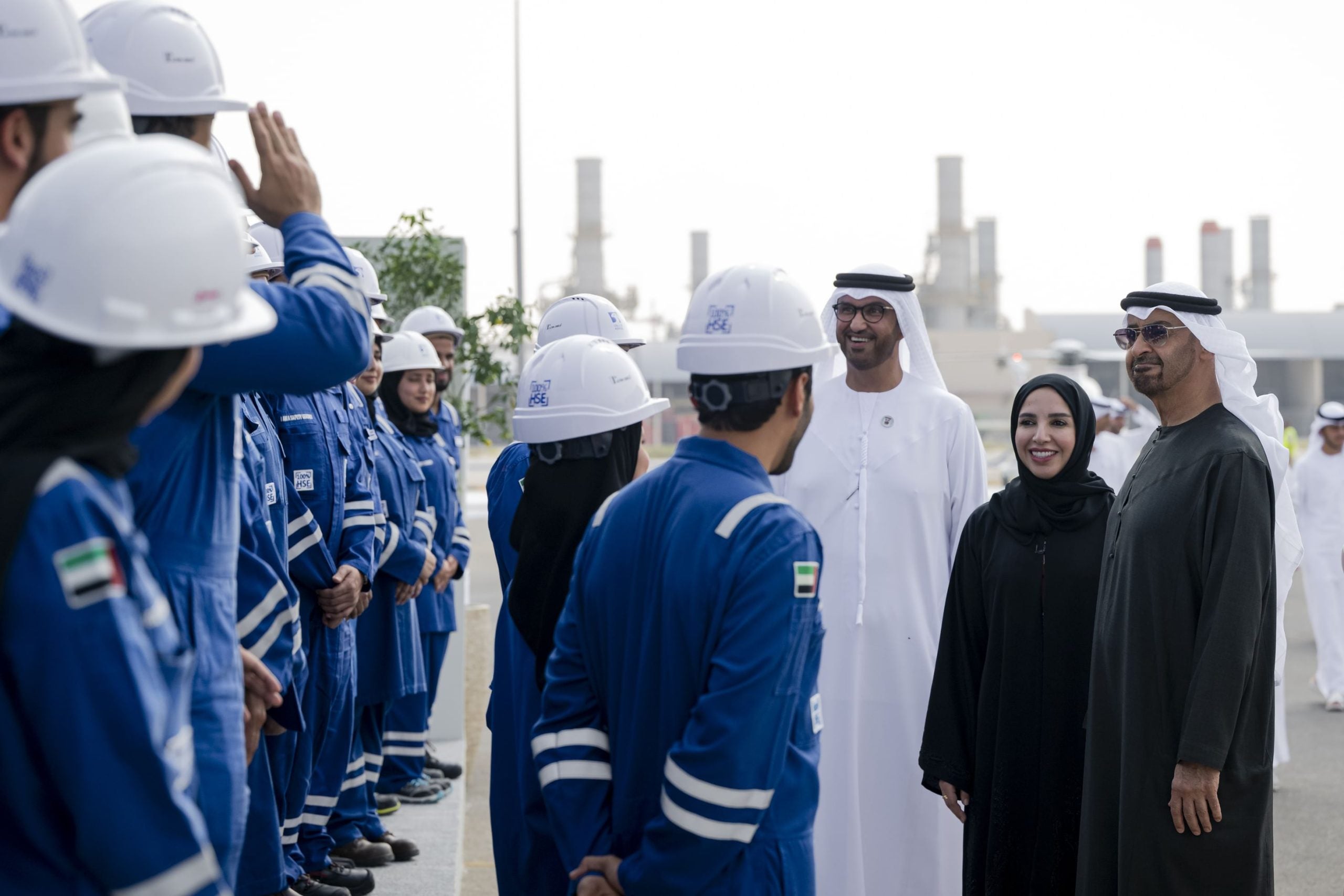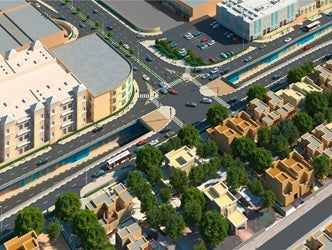Cop28 focuses energy transition spotlight on UAE
28 February 2023

Global climate negotiators, civil society groups, entrepreneurs and journalists will descend on Dubai’s Expo City in November for the 28th Conference of the Parties (Cop28) to the UN Framework Convention on Climate Change, putting the UAE at the centre and in charge of the annual climate talks.
UAE Vice President, Prime Minister and Ruler of Dubai, Mohammed bin Rashid al-Maktoum, has said Cop28 is the most important event the UAE will host in 2023. It is hard to argue otherwise.
Cop28 is expected to follow through with the implementation of a breakthrough loss-and-damage fund to help the most vulnerable countries address climate change, which was included for the first time in a Cop agreement last year.
It will conclude the first global stocktake, an assessment of the progress each country has made against the goals of the Paris Agreement, signed in 2016 by 195 nations, with the aim of keeping the mean global temperature rise to below 2 degrees Celsius compared with pre-industrial levels.
Contrasting agendas
Under the auspices of a state whose wealth was built for the most part on oil, negotiators are expected to lock horns over the policies, technologies and funding platforms best placed to enable climate mitigation and adaptation, and to wean the world off fossil fuels.
The relevance of the UAE's leadership in this year's Cop negotiations reflects the dilemma between meeting climate targets and a world that cannot yet live without hydrocarbons
It is not the first time an Opec member will host a Cop event – Qatar and Indonesia hosted them in 2012 and 2013, respectively. However, the appointment of Abu Dhabi oil chief and UAE climate envoy Sultan al-Jaber as Cop28 president-designate caused an uproar among environment and climate advocacy groups in January.
“I thought someone from outside the conventional energy sector would have given more credibility to the event,” an independent consultant tells MEED.
Despite this, commentators have also noted the UAE’s strategic clout and potential to act as a bridge between the affluent and developed countries increasingly referred to as the global north, such as the US, EU states, Russia and Japan, and the economically challenged countries in the global south, which includes swathes of Asia, Africa and Latin America.
The UAE maintains close economic and political ties with the majority of the countries in both groups, which largely have contrasting geopolitical, economic and energy profiles, as well as climate agendas.
According to Frank Wouters, director of the EU GCC Clean Energy Network and senior vice-president of Reliance Industries, the UAE, as one of the biggest donors of official development aid (ODA), can provide credibility and leadership in the effort to mobilise badly needed global capital towards climate change mitigation and adaptation efforts.
For instance, at Cop15 in Denmark in 2009, developed countries committed to a collective goal of mobilising $100bn a year for climate action in developing countries by 2020.
The goal was formalised at Cop16 in Mexico, and reiterated at Cop21 in France, with the timeline extended to 2025.
The latest available figure in 2020 stood at $83.3bn. “The reality is that this has not happened,” says Wouters. “So more can and should be done.”
With the UAE consistently rated among the countries with the highest ODA against gross national income, Cop28 is expected to provide further impetus to reaching this collective goal – one of the tangible outcomes most negotiators have hoped for at previous Cop events.
 Low-carbon fuels as the next LNG
Low-carbon fuels as the next LNG
A seat at the table
Despite the somewhat counter-intuitive proposition of giving petroleum-exporting countries a seat at the Cop negotiating table, the move is an important one, another expert tells MEED.
Mhamed Biygautane, a lecturer in public policy at the University of Melbourne, says these countries’ involvement in early discussions and negotiations is critical for any resultant decisions to have a meaningful impact on the ground.
“Petroleum states can make or break any climate-change negotiations because their interests are obviously at stake here,” he says.
“This is particularly the case for GCC states, whose economies rely heavily on oil rents and any reductions in oil exports will most certainly adversely affect their economies.”
Karen Young, senior research scholar at Columbia University’s Centre on Global Energy Policy, also points out the importance of considering the major difference in the politics of energy transition between national oil companies such as those based in Abu Dhabi and Saudi Arabia, and international oil companies such as BP and Shell.
“The state and the firm are linked, so energy policy … can include an emphasis on carbon capture and storage (CCS), on cleaner production and simultaneously on investments in renewables and economic statecraft – to deploy investment and technology to partner states that are both profitable and strategic in foreign relations,” Young says.
For example, the UAE has two national champions, Abu Dhabi National Oil Company (Adnoc) and clean energy firm Masdar, which in a different framework could be seen as a contradiction.
According to Young, the UAE is managing the energy transition with a goal of not just state survival, but of dominance across energy markets, technology and political ties across a broad geography.
This suggests that the UAE sees Cop28 as an opportunity not just to set a climate agenda, but also to put the country in a strong economic and political leadership position for decades.
Greenwashing fears
Significantly, 2022 was a year of record profits for global and national oil majors, as the war in Ukraine depressed supply and inflated prices.
 Aramco earns $42.4bn profit in third quarter
Aramco earns $42.4bn profit in third quarter
While oil firms around the world will continue to invest in renewables, some experts say they are likely to reinvest a significant amount in conventional hydrocarbons development due to robust oil demand, regardless of climate objectives.
This has reinforced fears of widespread greenwashing, or oil majors walking back on their net-zero targets, an issue commonly raised by advocacy groups at Cop events.
“Greenwashing is real, but ultimately it is not a useful framework,” says Young. “There is oil demand. There will continue to be oil demand. What matters is how we produce and transport it and, simultaneously, with purposeful government policy, reduce demand by creating incentives to use renewable energy and increase the costs of continuing to use oil.”
Biygautane also says stronger monitoring and international conventions with more powers for sanctions and penalties are necessary to deter businesses within and outside the hydrocarbons industry from making promises they will not honour.
Another expert points out the urgent need to focus on deploying clean technologies other than renewable energy, and to decarbonise sectors other than power, such as transport and buildings, along with the need for a bigger focus on transmission and distribution within the power sector.
“The major shortcoming remains in ensuring the required financing is there, which requires collective action from governments, corporates, financing and development institutions, in addition to individual behaviour and action,” says Jessica Obeid, academy associate at think tank Chatham House’s energy, environment and resources programme in London.
“It takes a village to achieve a serious sustainable transformation of our energy systems … requirements are many and efforts are only a few,” she says.
Resource allocation
For the GCC states, where historical data has pointed to a significant discrepancy between hydrocarbons production and clean energy investments, this will mean more resource allocation is required.
For example, data from regional projects tracker MEED Projects shows that the value of wind, solar and waste-to-energy generation contracts equates to a mere 10 per cent of the $254bn-worth of contracts awarded across the GCC states’ oil and gas sectors over the past 10 years, excluding investments made by GCC-based investors and developers overseas.
When it comes to projects in the advanced procurement stage, the ratio of renewable energy projects more than doubles, at 24 per cent against the value of oil and gas schemes.
This provides a positive market signal that could further improve if a portion of the GCC economic vision-related renewable energy schemes, carbon capture, utilisation and storage (CCUS) and clean hydrogen projects move into procurement.
While this improvement may not prove to be enough to appease all climate change advocates, the clear policy convergence on clean hydrocarbons production between the UAE, Oman, Saudi Arabia and, to a lesser extent, Kuwait, is
significant. It could help to further drive the gradual uncoupling of their economies from fossil fuels over the coming years or decades.
Columbia University’s Young concludes: “Which states ride the coattails of the UAE in this Cop and its subsequent agenda will be interesting to watch.”
Spotlight on the UAE
The UAE has been building up its green and clean energy base and working on energy transition objectives for some time. It set an energy diversification agenda in 2017 and was the first Middle East country to declare a target of net-zero carbon emissions by 2050. The Abu Dhabi Energy Department has launched regulations covering waste-to-energy, electric vehicles and clean energy certificates, along with energy-efficiency initiatives that include building retrofits. The UAE’s clean energy installed capacity, including three units of the Barakah nuclear power plant, stood at 7.6GW as of December. It is also finalising its green hydrogen roadmap. Pragmatic transitionThe growing number of new projects involving Masdar, which Al-Jaber chairs, forms part of the UAE’s pragmatic energy transition strategy. This involves developing and expanding nuclear and renewable energy and hydrogen capacity in addition to expanding its hydrocarbons output. Adnoc and Abu Dhabi National Energy (Taqa) have taken control of Masdar, whose operations have been split into separate renewable energy and green hydrogen businesses. The firm aims to have 100GW of renewable installed capacity and 1 million tonnes of green hydrogen by 2030. “Adnoc is the only national oil company (NOC) to pursue renewable merger and acquisition, buying into the H2Teeside hydrogen project in the UK alongside BP,” notes Kavita Jadhav, research director, corporate research at UK-based Wood MacKenzie. “Its investments in low-carbon energy will increase, and it may also make further international acquisitions in hydrogen; CCUS; and solar, in a wave that could be similar to the rush of activity seen in the UK and Europe in the run-up to Cop26.” Jadhav predicts the UAE and wider Middle East could have a similar eureka moment to the Inflation Reduction Act in the US, which promises a boom time for hydrogen, CCS and solar. “A lot can happen when you have the spotlight on you,” she says. |
Exclusive from Meed
-
 Visa agrees to support digital payments in Syria
Visa agrees to support digital payments in Syria5 December 2025
-
 Meraas announces next phase of Nad Al-Sheba Gardens
Meraas announces next phase of Nad Al-Sheba Gardens5 December 2025
-
 Frontrunner emerges for Riyadh-Qassim IWTP
Frontrunner emerges for Riyadh-Qassim IWTP5 December 2025
-
 Adnoc creates new company to operate Ghasha concession
Adnoc creates new company to operate Ghasha concession5 December 2025
-
 Dubai RTA announces Al-Wasl road development project
Dubai RTA announces Al-Wasl road development project5 December 2025
All of this is only 1% of what MEED.com has to offer
Subscribe now and unlock all the 153,671 articles on MEED.com
- All the latest news, data, and market intelligence across MENA at your fingerprints
- First-hand updates and inside information on projects, clients and competitors that matter to you
- 20 years' archive of information, data, and news for you to access at your convenience
- Strategize to succeed and minimise risks with timely analysis of current and future market trends

Related Articles
-
 Visa agrees to support digital payments in Syria
Visa agrees to support digital payments in Syria5 December 2025
Visa and the Central Bank of Syria have agreed on a strategic roadmap that will allow the US-based card and digital payments company to begin operations in Syria and support the development of a modern digital payments system.
Under the agreement, Visa will work with licensed Syrian financial institutions under a phased plan to establish a secure foundation for digital payments.
The early stages will involve Visa supporting the central bank in issuing Europay, Mastercard and Visa (EMV)-compliant payment cards and enabling tokenised digital wallets – bringing the country in line with internationally interoperable standards.
Visa will also provide access to its platforms, including near-field communication (NFC) and QR-based payments, invest in local capacity building and support local entrepreneurs seeking to develop solutions leveraging Visa’s global platform.
“A reliable and transparent payment system is the bedrock of economic recovery and a catalyst that builds the confidence required for broader investment to flow into the country,” noted Visa’s senior VP for the Levant, Leila Serhan. “This partnership is about choosing a path where Syria can leapfrog decades of legacy infrastructure development and immediately adopt the secure, open platforms that power modern commerce.”
The move marks one of the most significant steps yet in Syria’s slow and uneven return to the formal global financial system and carries implications that reach beyond just payments technology.
It lays the groundwork for overturning more than a decade of financial isolation in which Syria has operated largely outside global banking and settlement networks.
Visa’s entry will not erase all existing barriers – as many restrictions remain in force and will continue to shape what is practically possible – but its support signals a reopening of channels that could smooth Syria’s reintegration into financial networks.
The involvement of the US-based payments provider is also a further tacit sign of the US government’s enthusiastic bear hug of the new post-Assad Syrian government under President Ahmed Al-Sharaa.
For investors assessing long-term opportunities, the presence of a globally recognised payments operator will provide reassurance that Syria’s financial system is returning to international norms, and the security and transparency that comes with it.
https://image.digitalinsightresearch.in/uploads/NewsArticle/15207198/main.gif -
 Meraas announces next phase of Nad Al-Sheba Gardens
Meraas announces next phase of Nad Al-Sheba Gardens5 December 2025
Dubai-based real estate developer Meraas Holding, which is part of Dubai Holding, has announced the eleventh and final phase of its Nad Al-Sheba Gardens residential community in Dubai.
It includes the development of 210 new villas and townhouses and a school, which will be located at the northwest corner of the development.
The latest announcement follows Meraas awarding a AED690m ($188m) contract for the construction of the fourth phase of the Nad Al-Sheba Gardens community in May, as MEED reported.
The contract was awarded to local firm Bhatia General Contracting.
The scope of the contract covers the construction of 92 townhouses, 96 villas and two pool houses.
The contract award came after Dubai-based investment company Shamal Holding awarded an estimated AED80m ($21m) contract to UK-based McLaren Construction last year for the Nad Al-Sheba Gardens mall.
The project covers the construction and interior fit-out of a two-storey mall, covering an area of approximately 12,600 square metres.
The UAE’s heightened real estate activity is in line with UK analytics firm GlobalData’s forecast that the construction industry in the country will register annual growth of 3.9% in 2025-27, supported by investments in infrastructure, renewable energy, oil and gas, housing, industrial and tourism projects.
The residential construction sector is expected to record an annual average growth rate of 2.7% in 2025-28, supported by private investments in the residential housing sector, along with government initiatives to meet rising housing demand.
https://image.digitalinsightresearch.in/uploads/NewsArticle/15206904/main.jpg -
 Frontrunner emerges for Riyadh-Qassim IWTP
Frontrunner emerges for Riyadh-Qassim IWTP5 December 2025

Saudi Arabia’s Vision Invest has emerged as frontrunner for the contract to develop the Riyadh-Qassim independent water transmission pipeline (IWTP) project, according to sources.
State water offtaker Saudi Water Partnership Company (SWPC) is preparing to award the contract for the IWTP "in the coming weeks", the sources told MEED.
The project, valued at about $2bn, will have a transmission capacity of 685,000 cubic metres a day. It will include a pipeline length of 859 kilometres (km) and a total storage capacity of 1.59 million cubic metres.
In September, MEED reported that bids had been submitted by two consortiums and one individual company.
The first consortium comprises Saudi firms Al-Jomaih Energy & Water, Al-Khorayef Water & Power Technologies, AlBawani Capital and Buhur for Investment Company.
The second consortium comprises Bahrain/Saudi Arabia-based Lamar Holding, the UAE's Etihad Water & Electricity (Ewec) and China’s Shaanxi Construction Installation Group.
The third bid was submitted by Saudi Arabia's Vision Invest.
It is understood that financial and technical bids have now been opened and Vision Invest is likely to be awarded the deal.
The Riyadh-based investment and development company made a "very aggressive" offer, one source told MEED.
In November, the firm announced it had sold a 10% stake in Saudi Arabia-based Miahona as part of a strategy to reallocate capital "towards new and diversified investments".
The company did not disclose which projects the capital might be reallocated towards.
As MEED recently reported, Vision Invest is also bidding for two major packages under Dubai's $22bn tunnels programme in a consortium with France's Suez Water Company.
The Riyadh-Qassim transmission project is the third IWTP contract to be tendered by SWPC since 2022.
The first two are the 150km Rayis-Rabigh IWTP, which is under construction, and the 603km Jubail-Buraydah IWTP, the contract for which was awarded to a team of Riyadh-based companies comprising Al-Jomaih Energy & Water, Nesma Group and Buhur for Investment Company.
Like the first two IWTPs, the Riyadh-Qassim IWTP project will be developed using a 35-year build-own-operate-transfer contracting model.
Commercial operations are expected to commence in the first quarter of 2030.
https://image.digitalinsightresearch.in/uploads/NewsArticle/15206609/main.jpg -
 Adnoc creates new company to operate Ghasha concession
Adnoc creates new company to operate Ghasha concession5 December 2025
Register for MEED’s 14-day trial access
The board of directors of Abu Dhabi National Oil Company (Adnoc Group) has approved the establishment of a new company to operate the Ghasha offshore sour gas concession in Abu Dhabi waters.
The decision to create the new entity, to be called Adnoc Ghasha, was taken during a recent meeting of Adnoc Group’s board in Abu Dhabi, which was chaired by Sheikh Mohamed Bin Zayed Al-Nahyan, UAE President and Ruler of Abu Dhabi.
Adnoc Group owns and operates the Ghasha concession, holding the majority 55% stake. The other stakeholders in the asset are Italian energy major Eni with a 25% stake, Thailand’s PTTEP Holding, which holds a 10% interest, and Russia’s Lukoil, owning the remaining 10% stake.
The Ghasha concession consists of the Hail and Ghasha fields, along with the Hair Dalma, Satah al-Razboot (Sarb), Bu Haseer, Nasr, Shuwaihat and Mubarraz fields.
Adnoc expects total gas production from the concession to ramp up to more than 1.8 billion cubic feet a day (cf/d) before the end of the decade, along with 150,000 barrels a day of oil and condensates. This target will mainly be achieved through the Hail and Ghasha sour gas development project.
In October 2023, Adnoc and its partners awarded $16.94bn of engineering, procurement and construction (EPC) contracts for its Hail and Ghasha project – the biggest capital expenditure made by the Abu Dhabi energy company on a single project in its history.
Adnoc awarded the onshore EPC package to Italian contractor Tecnimont, while the offshore EPC package was awarded to a consortium of Abu Dhabi’s NMDC Energy and Italian contractor Saipem.
The $8.2bn contract relates to EPC work on offshore facilities, including facilities on artificial islands and subsea pipelines.
The Hail and Ghasha development will also feature a plant that will capture and purify carbon dioxide (CO2) emissions for sequestration (CCS), in line with Adnoc’s committed investment for a carbon capture capacity of almost 4 million tonnes a year (t/y). The CO2 recovery plant will have a total capacity to capture and store 1.5 million t/y of emissions from the Hail and Ghasha scheme.
Prior to reaching the final investment decision on the Hail and Ghasha project in 2023, the Ghasha concession partners, led by Adnoc, awarded two EPC contracts worth $1.46bn in November 2021 to execute offshore and onshore EPC works on the Dalma gas development project. The project will enable the Dalma field to produce about 340 million cf/d of natural gas.
https://image.digitalinsightresearch.in/uploads/NewsArticle/15206382/main2754.jpg -
 Dubai RTA announces Al-Wasl road development project
Dubai RTA announces Al-Wasl road development project5 December 2025
Register for MEED’s 14-day trial access
Dubai’s Roads & Transport Authority (RTA) has announced the Al-Wasl Road upgrade project, spanning 15 kilometres (km) from the intersection with Umm Suqeim Street to the junction with 2nd December Street.
The scheme includes upgrading six intersections – Al-Thanya, Al-Manara, Umm Al-Sheif, Umm Amara, Al-Orouba and Al-Safa streets – along with upgrading Al-Thanya Street and constructing five tunnels totalling 3.8km.
A new tunnel will be built at the intersection with Al-Manara Street. It will consist of three lanes and split into two routes: two lanes from Sheikh Zayed Road to Jumeirah Street and two lanes from Sheikh Zayed Road to Umm Suqeim Street, with a total capacity of 4,500 vehicles per hour.
The project also includes a 750m-long tunnel on Umm Al-Sheif Street, comprising two lanes from Sheikh Zayed Road to Jumeirah Street, accommodating up to 3,200 vehicles per hour.
A tunnel will be constructed at the intersection of Al-Wasl Road with Umm Amara Street, featuring two lanes in each direction, with a total length of 700m and a combined capacity of 6,400 vehicles per hour.
The road will also be widened from two to three lanes in each direction.
The project is expected to reduce travel times along Al-Wasl Road by 50% and increase capacity from 8,000 to 12,000 vehicles per hour in both directions.
Planning for growth
In March 2021, the government launched the Dubai 2040 Urban Master Plan. Its launch referenced studies indicating that the emirate’s population will reach 5.8 million by 2040, up from 3.3 million in 2020. The daytime population is set to increase from 4.5 million in 2020 to 7.8 million in 2040.
In December 2022, Sheikh Mohammed Bin Rashid Al-Maktoum, Vice President and Prime Minister of the UAE and Ruler of Dubai, approved the 20-Minute City Policy as part of the second phase of the Dubai 2040 Urban Master Plan.
In addition to the road projects, the RTA’s Dubai Metro Blue Line extension forms part of Dubai’s plans to improve residents’ quality of life by cutting journey times, as outlined in the policy.
The policy aims to ensure that residents can meet 80% of their daily requirements within a 20-minute journey time, on foot or by bicycle. This goal will be achieved by developing integrated service centres with all necessary facilities and by increasing population density around mass transit stations.
https://image.digitalinsightresearch.in/uploads/NewsArticle/15205950/main.jpg




